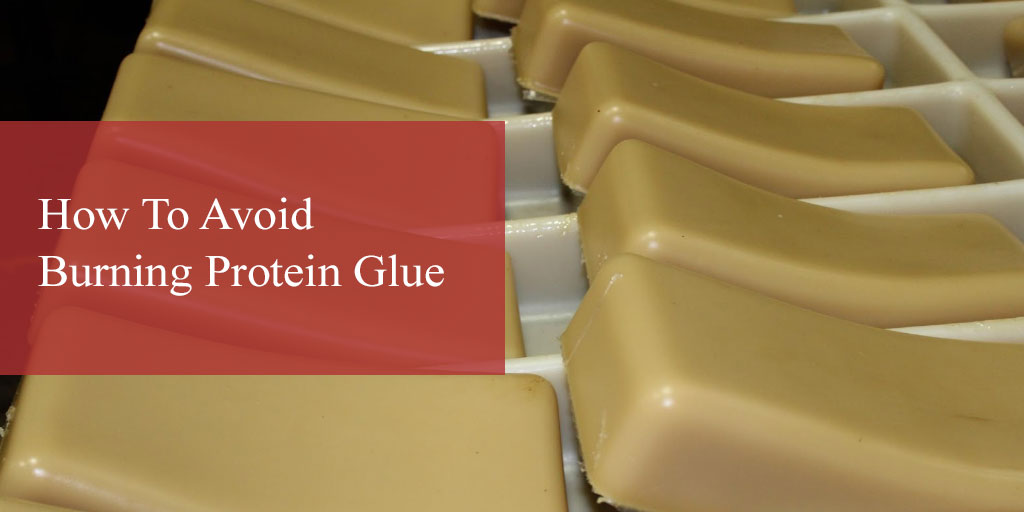When applying protein glue, temperature plays a significant role. It’s important to make sure you’re keeping your glue at an optimal temperature to have good adhesion, but sometimes accidents can happen. Here is how to identify, clean up, and avoid burning your protein glue to keep your manufacturing process running smoothly.
-
At what temperature does protein glue burn?
Protein glue is designed to be heated to 140-150°F or 60-65°C. If the temperature goes higher than that, you run the risk of degrading or burning your protein glue. If the adhesive is too hot, it will become far too runny to adhere well or might start to char.
If you run your protein glue at lower temperature (under 140-150F), it is not ideal either because it can become too thick to apply easily. Low-temperature protein glue can also set too quickly, which might result in messy equipment. By keeping your protein glue at the correct temperature, you can avoid creating a mess or compromising your glue's quality. -
What are the signs of burnt protein glue?
Just like how you know you’ve left something on the stove too long, protein glue will have a burnt smell if kept at too high a temperature. The adhesive will also turn a darker, charred color. The biggest downside to burnt protein glue is that it will lose its adhesion qualities.
-
Is there any way to save or reuse burnt protein glue?
No, unfortunately. Once the protein glue is burnt, you have to dispose of it in the trash. There is no additive or method to change it back to its original composition. -
Can burnt protein glue damage glue pots?
Yes, in a roundabout way. Burnt glue needs to be removed from the glue pot, or it could cause problems with inconsistent glue application. To clean the glue pot (pre-melter), you need to scrape the burnt glue out, which can end up accidentally gouging the sides of the pot. If you still can’t get the burnt glue off, you might need to pressure wash your equipment, which can take time away from production.
One of the best ways to ensure your glue application runs smoothly is to clean your glue pot regularly. If the glue pot is dirty and the adhesive is caking the side of it, you’ll have a difficult time maintaining the proper temperature for your glue or cause your glue to become dirty. To learn more about how to clean your glue pot properly, check out these tips. -
What’s the best way to prevent burning protein glue?
To prevent your glue from burning, you should try to keep the glue pot full during operation and run the adhesive at the recommended temperature (140 - 150°F or 60-65°C).
When the machines are not running, turn down the heat to prevent the glue from ‘cooking’ in the pot. Better yet, assuming you don’t have a 24-hour production cycle, empty the glue pot and clean it. Maintaining your equipment and keeping your glue at the right temperature are the best ways to ensure your production runs as it should.
Troubleshooting Protein Glue Production
Every company’s production runs a little differently. If you have technical questions for our lab team about how you use protein glue in your application, we’re here to help.







